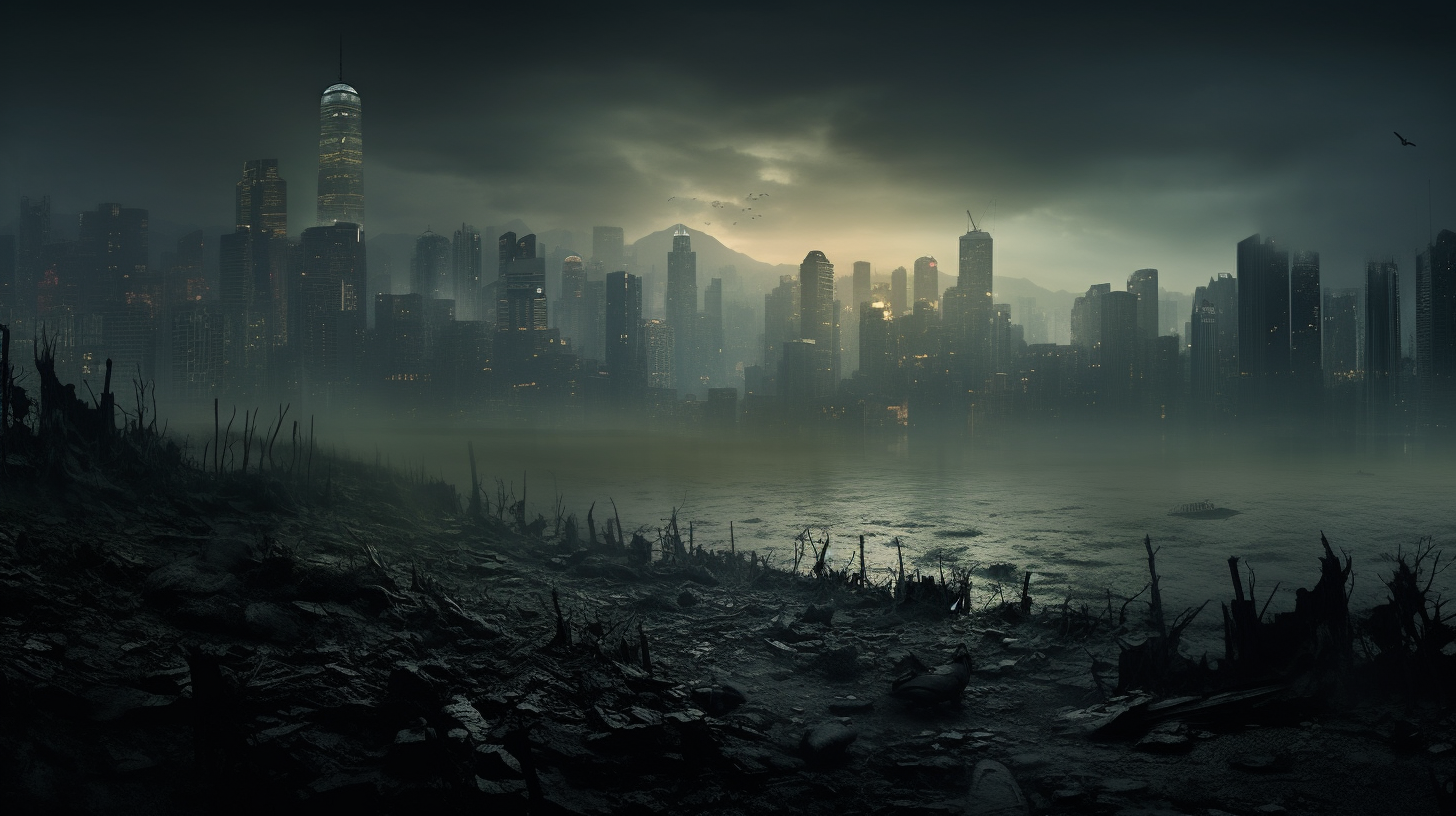Once upon a present-dystopian day, when the sky wept tears of toxic fumes and the horizon was naught but a faded memory, there stood monuments of human prowess, reaching for the stars they could no longer see. This is the elegy of our skyline, not penned but suffocated by the relentless march of smog that shrouds our legacy in its shadowy pall.
Through the murk, the silhouettes of skeletal skyscrapers loom, eerie testament to what once was a sign of progress. No glass pane gleams with reflections of the sun; all is dulled, monochrome in nature. A soft, ominous hum pervades the air, not unlike the dirge sung by civilizations past, lamenting not their demise, but our own.
In this cacophonous silence, whispers of a once-thriving cityscape are carried by the smog-thickened winds. They speak of parks with verdant grass, of children with faces tilted upwards, trusting in the blueness of the sky. Now, the very atmosphere we breathe rebels against us, cloaking these recollections in a haze of despair.
The avenues that once bustled with a multitude of footsteps are but a stage for shadows, a playground for the specters of our heedlessness. Here, artificial lights wage a losing battle against a smog that never retreats, a constant twilight, a relentless usurper of day and night.
Indeed, these are no ordinary fog banks rolling in with the ebb and flow of natural tides; these are waves of our own conjuring, the sorcerer’s spell gone awry. They are an immortal shroud over nature’s beauty, a smoggy blanket births asthmatic breaths amidst gasps for the last remnants of fresh air.
And amidst this grand urban decay, life – if one can call it such – persists. Echoing the bleak narratives found in ‘Life in the Smog Forests, A New Chapter in Urban Evolution,’ humanity finds itself adapting, mutating, in a solemn dance with the smog. They are the shades that flicker against the wrecks of their own creation, casting long, deformed shadows along the remnants of boulevards.
An ironic beauty arises, the juxtaposition of human will against the indomitable pollution. Urban gardens, once emerald crowns adorning the city’s head, now lay withered, their foliage stained in soot, the earth beneath them a graveyard of seeds that never bloomed. Oh, how nature strives! With what rigor mortis-like persistence does it aim to clutch onto life!
Much like the haunting depictions found in the Smog Forests narrative, our current reality is a canvas of a future envisaged, a nightmare unfolded in broad daylight. Where buildings that once scraped the skies now scrape by, harboring a dystopian existence among their ashen spires.
We wander these desolate avenues not out of leisure but necessity, our masks fixed firmly, filtering what little hope remains along with the air we breathe. Our eyes, once the windows to our souls, now glare out from behind goggles that shield us from the sting of the air our forebears poisoned unwittingly.
Children born into this age won’t reminisce about kites dancing with the wind, for their playground is found beneath domes that simulate the laughter of past skies. Their world is concrete gray, their sunsets and sunrises painted in shades of grayscale gloom.
As a chronicler of this era of smog, it is but my somber duty to illustrate the masquerade of existence we partake in, a dance so morbidly grand it demands an orchestra of the surreal to play its score. In this symphony of decay, each note rings hollow, a reminder that once, not so long ago, the sky was ours to embrace.
But now we stand, heads bowed, not in reverence but in avoidance of the acrid air above, beneath a sky we have orphaned. So we stand, under the ever-present smog, and sing – if singing is still what we do – our skyline’s final elegy.
